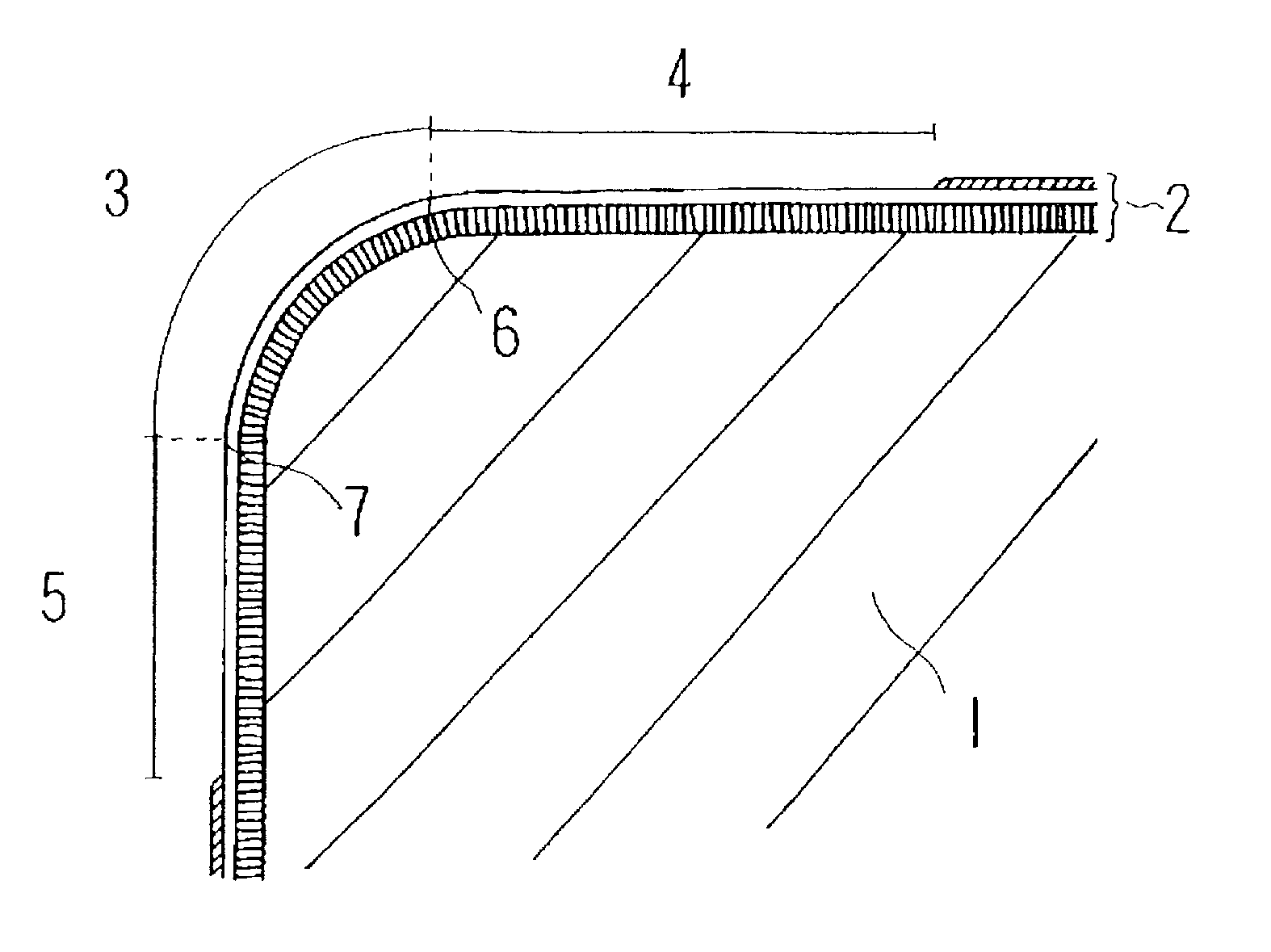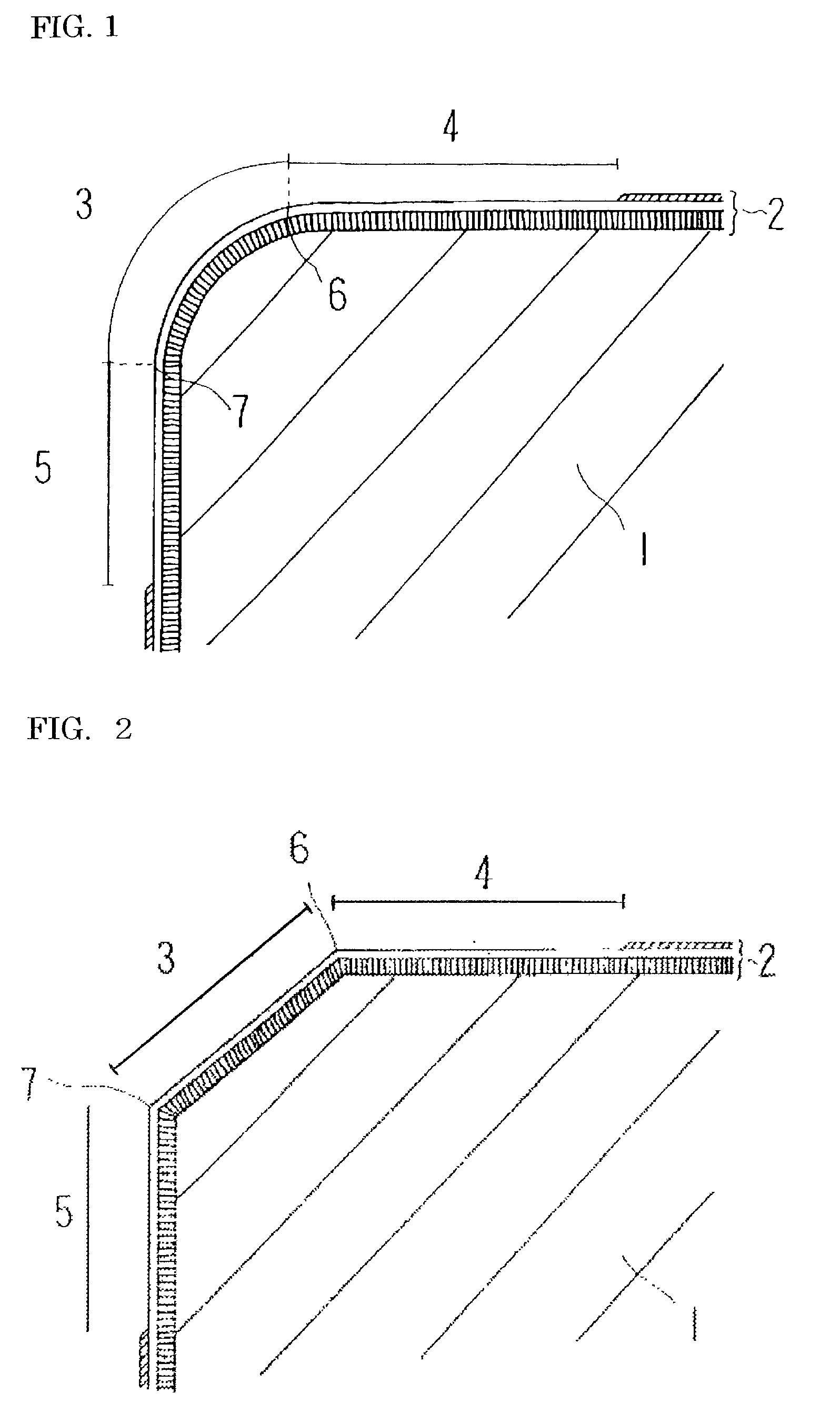Coated cutting tool
a cutting tool and coating technology, applied in the direction of shaping cutters, manufacturing tools, natural mineral layered products, etc., can solve the problems of surface roughness deterioration and substrate damage of machined workpieces, and achieve high hardness and abrasion resistance, prevent damage from aluminum oxide of outer layers, and high wear resistance
- Summary
- Abstract
- Description
- Claims
- Application Information
AI Technical Summary
Benefits of technology
Problems solved by technology
Method used
Image
Examples
experimental example 2
[0045] Cutting tips with a form of model No. CNMG120408 were manufactured from a sintered hard alloy with a composition of 88% WC-3% ZrCN-4% TaNbC-5% Co (%: % by weight). Next, for edge machining to prepare substrates, the whole of the cutting blade portion was subjected to honing in a width of 0.05 mm viewed from the rake face side. The flank of this substrate is a sintered surface.
[0046] Cutting tip samples were manufactured by coating the surface of these substrates with TiN, TiC, TiCN, ZrCN, Al.sub.2O.sub.3, and others by means of normal chemical vapor deposition (CVD). Next, the blade-edge ridge and the rake face side and flank side from the same ridge were subjected to grinding and lapping by using an elastic grindstone, and then the surface roughness (Rmax) with respect to a reference length of 5 .mu.m was measured from a scanning electron microscope photograph of the cross-section of the tips. The results of the measurement are shown in Table II.
[0047] By using the cutting t...
experimental example 3
[0057] Cutting tips with a form of model No. SDKN1203 were manufactured from a sintered hard alloy with a composition of 81% WC-5% TiCN-4% TaNbC-10% Co (%: % by weight). Next, for edge machining to prepare substrates, the whole of the cutting blade portion was subjected to chamfer-honing in a width of 0.10 mm viewed from the rake face side. The surface of the substrates partially includes an as-sintered surface and a ground surface.
[0058] Cutting tip samples were manufactured by coating the surface of the substrates with TiN, TiC, TiCN, TiAlN, Al.sub.2O.sub.3, and others by normal chemical vapor deposition (CVD) and physical vapor deposition (PVD)(herein, arc ion plating). Next, at the blade-edge ridge, rake face side and flank side, grinding and lapping were applied by using a brush, and then the surface roughness (Rmax) with respect to the reference length of 5 .mu.m was measured from a scanning electron microscope photograph of the cross-section of the tips. The results of the me...
experimental example 4
[0068] Cutting tips with a form of model No. CNMG120408 were manufactured from a cermet alloy with a composition of 12% WC-65% TiCN-6% TaNbC-3% MO2C-7% Co-7% Ni (%: % by weight). Then, for edge machining to prepare substrates, the whole of the cutting blade portion was subjected to honing in a width of 0.06 mm viewed from the rake face side. The flank of the substrates has an as-sintered surface.
[0069] Cutting tip samples were manufactured by coating the surface of the substrates with TiN, TiC, TiCN, TiAlN, Al.sub.2O.sub.3, and others by normal chemical vapor deposition (CVD) and physical vapor deposition (PVD)(herein, arc ion plating). Next, at the blade-edge ridge, rake face side, and flank side, grinding and lapping were applied by using an elastic grindstone, and then surface roughness (Rmax) with respect to the reference length of 5 .mu.m was measured from a scanning electron microscope photograph of the cross-section of the tips. The results of the measurement are shown in Tab...
PUM
| Property | Measurement | Unit |
|---|---|---|
| length | aaaaa | aaaaa |
| length | aaaaa | aaaaa |
| length | aaaaa | aaaaa |
Abstract
Description
Claims
Application Information
 Login to View More
Login to View More - R&D
- Intellectual Property
- Life Sciences
- Materials
- Tech Scout
- Unparalleled Data Quality
- Higher Quality Content
- 60% Fewer Hallucinations
Browse by: Latest US Patents, China's latest patents, Technical Efficacy Thesaurus, Application Domain, Technology Topic, Popular Technical Reports.
© 2025 PatSnap. All rights reserved.Legal|Privacy policy|Modern Slavery Act Transparency Statement|Sitemap|About US| Contact US: help@patsnap.com


